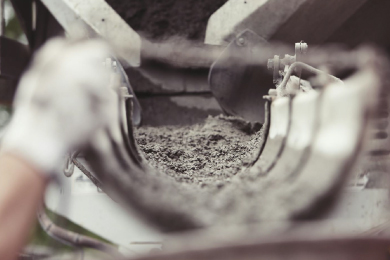Since October 2023, we’ve seen a raft of changes and improvements to fire safety legislation in both commercial and residential buildings.
But as engineers carrying out dilapidations and surveys, and leading the mechanical and electrical (M&E) work in both retrofit projects and new builds, we’re still concerned.
This is because we repeatedly find evidence that corners have been cut, and buildings’ quality and safety standards – including fire protection - have played second fiddle to deadlines and profit.
In this blog - condensed from the Voices in Construction Insight Panel Focus on Fire, run by construction marketing specialists BCMAgency, in which we recently participated- we take a brief look at some of the recent regulatory changes to fire safety, and explain why the legislation – in our view – still hasn’t got it quite right.
What’s changed – and what’s its effect?
The Fire RiskAssessment (FRA)process has admittedly been made more rigorous, with stricter demands on Responsible Persons to collect and record fire risk information, and coordinate fire safety plans and efforts with other Responsible Persons and similar.
Although we’re not fire safety specialists, what’s interesting in our line of work is that much of this and related fire legislation change has now been closely written into the associated legislation around buildings and construction - for example the Building Safety Act 2002.
Fire safety laws have also gained significant ‘teeth’, with stricter interpretations of breaches, and greater penalties for those who commit them.
And in terms of enforcement and policing, we are, according to industry experts, now seeing increased site visits and spot checks by regulators to ensure that FRAs are current and compliant.
All good – but from what we see on daily basis, our concern is that the paperwork and the policies have grown arms and legs, but once you peel back the fabric of the building, building regulations of all kinds are simply being ignored.
The disarray of deregulation
This can impact fire safety, for sure. It can also impact building quality and the rights of residents and tenants to use and enjoy the building and be protected from other risks within it.
It can also impact the building’s carbon emissions, energy efficiency, and therefore sustainability.
One of the issues behind this is that, for too long, the deregulation of building inspection and approval, and its practise by private individuals and companies rather than Government agencies, has led to a progressive loss of rigour.
The days of contractors working in London running around, quite frankly, scared, when a visit from a Section 20 officer was on the cards, are long gone.
Instead, we’ve allowed contractors to becoming both poacher and gamekeeper, as it were, signing off the compliance of their own work.
That can only lead to a drop in standards – and whilst we as a business certainly lament that on the sustainability front, we’d be the first to concede that on the fire safety front the danger is much more immediate.
And the tragedy of it is that it could mean there are more Grenfells to come.
Compliance without context
What do we mean by that?
Here’s an example we’ve come across many times in both new builds and renovations.
Kitchen extractor ducts in hotels and other commercial buildings are often passed as compliant by the contractor, but in fact they’re often only compliant for smoke containment, not for heat insulation. The broader compliance context gets conveniently ignored.
So, when that ducting reaches 800 degrees, everything around it catches fire and takes the building - and, in the worst case scenario, its residents - with it.
The underlying problem here is a fundamental lack of quality assurance by competent people. And the problem underlying that is that the skills gap in the construction industry is making competent people of any kind increasingly difficult to find.
Consider for a moment that kitchen ducting is only one of typically hundreds of places in a building where a fire can start, and one of many thousands where contractors have historically been allowed to flout compliance either wholly or partly, and the question has to be asked as to whether the new fire regulations are getting through at the coalface, rather than languishing in the statute books.
What’s the industry view?
Judging by the responses of our colleagues and peers on the Focus on Fire panel, the challenges that beset the new fire safety regulations are indeed many.
Amongst the issues mentioned were the ‘just-in-time’ nature of building design in the UK, where foundations are often laid and concrete poured before a final, compliant design has been approved; non-compliant work by smaller contractors who are looking for cost savings sneaking in under the radar; the lack of clarity in some of the new regulations; and the amount of time it will take before new requirements and obligations are fully understood at every echelon.
And though one building control specialist on the panel highlighted the undeniable recent strengthening of the building inspection and signoff competence regime, he also conceded that they were already seeing delays in building approval and sign off because of an absence of suitably qualified resources.
Going round in circles?
In conclusion, there can be little doubt that fire safety regulations, as an integrated part of building regulations, and the level of focus on them, have come a long way since the tragedy of the recent past. On paper.
But it seems like they might not be going far enough, fast enough, withenough resource to support them.
That bottleneck could, ultimately, lead us back to the box-ticking, ‘just get it done’ approach we have seen before, which, as one of the Focus on Fire panellists remarked, is “what we’re trying to get away from.”
And that anti-evolution is something all of us in the industry - across fire safety, sustainability, quality, and every other key area of building integrity – should strenuously resist.





.png)




